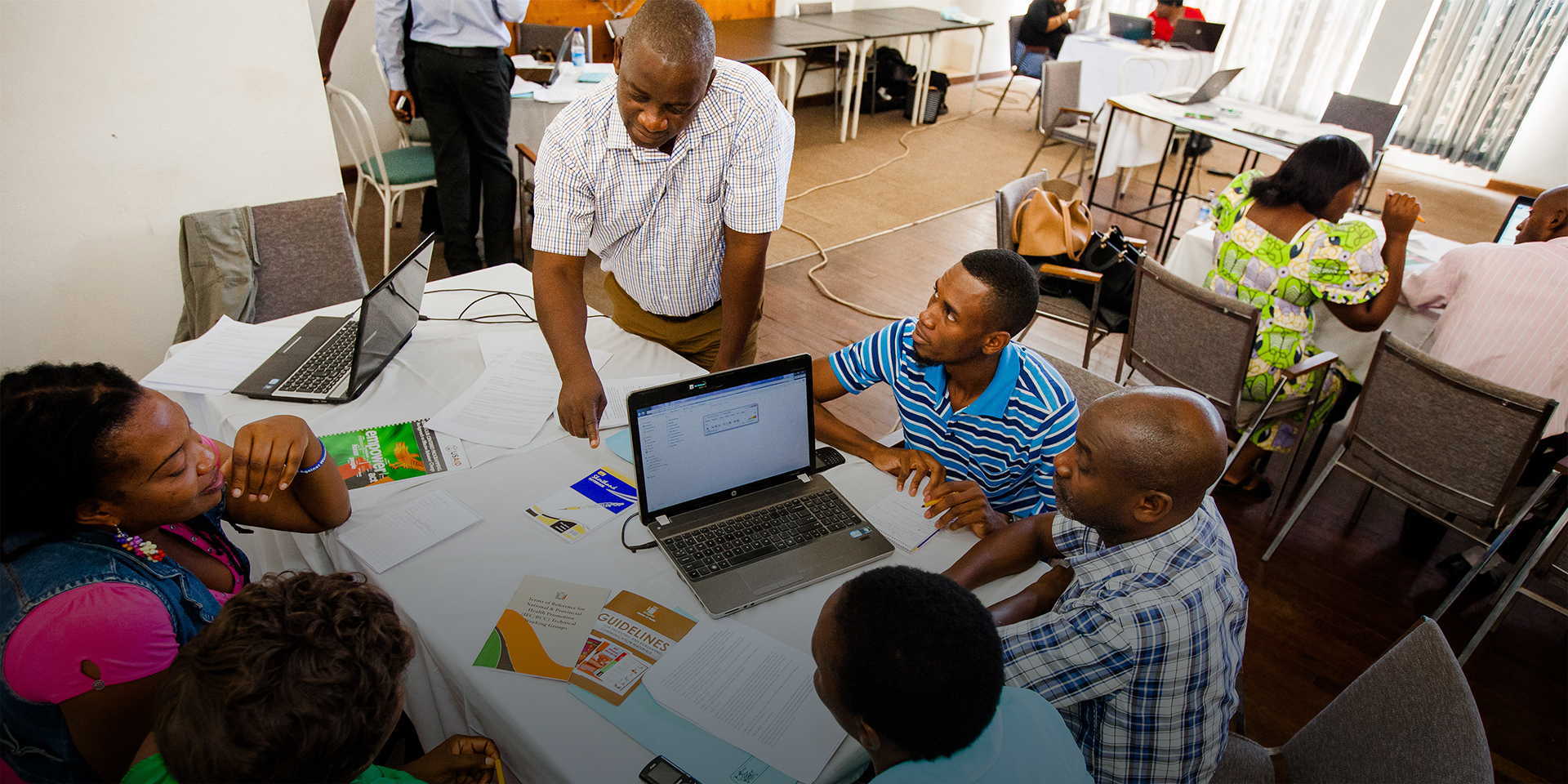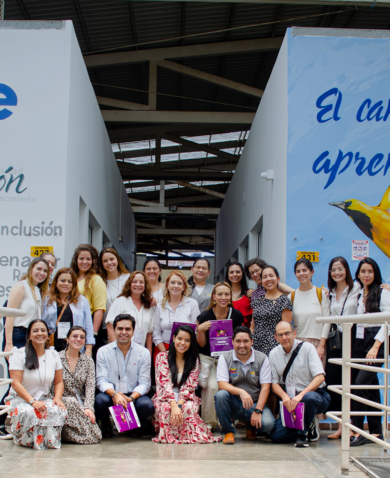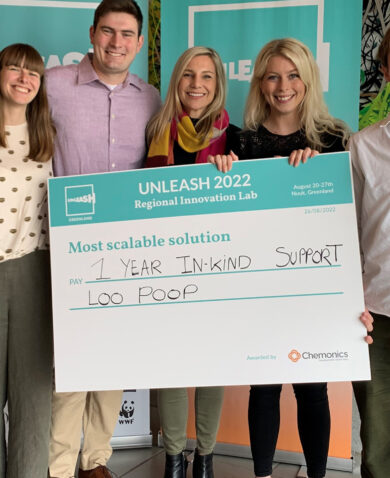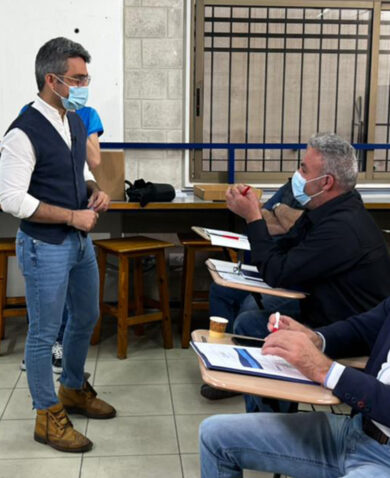
A User is a User: 3 Tips from the Private Sector for Human-Centered Design
April 17, 2018 | 4 Minute ReadThe basic principles of human-centered design are often applied to many sectors outside of global development. How can the development community use lessons learned from the private sector to enhance development programming?
The development world is no stranger to human-centered design. Many of the basic principles — working with stakeholders to understand their needs, reframing core issues, taking a pilot-based approach to program design and refinement — have been part of the development discourse, in one form or another, for the last few decades. And as a formalized process, it’s become a key component of many aid strategies. As this field increasingly recognizes the need for a collaborative, holistic approach to projects, human centered design (HCD) — otherwise known as “user-centered design” or “design thinking” — has become a common framework for addressing some of the sector’s most intractable challenges.
But the fact remains that development practitioners still have a lot to learn from other sectors (fields like healthcare, retail, and technology) where these same principles have been applied for years to challenges that may look very different. What insights can we glean from design thinking’s usage in other areas? A recent weekend spent at the Global Service Jam offered some answers.
Jamming globally, designing locally
The Global Service Jam is a volunteer-run annual event that’s held simultaneously in more than seventy cities around the world. It brings together designers and design enthusiasts of all ages and backgrounds to focus on a single challenge: design a service inspired by that year’s theme. As such, it serves as an opportunity to practice HCD in new ways, observe methods used in other fields, and be reminded of the many different forms innovation can take.
I first took part in the Service Jam several years ago, while working as a design strategist in the private sector. This year, I returned as a coach. As part of Chemonics’ Knowledge, Innovation, and Technology team, a big part of my job is supporting teams and projects as they implement these principles from a development perspective, and I was curious to see what practitioners could learn from an approach that focused on different sectors. Here are a few of the key takeaways:
Lessons learned
- Design principles can be a universal language for connecting with people from different backgrounds. At the Jam, I found myself coaching a diverse team that included a doctor, a monitoring, evaluation, and learning (MEL) specialist, a musician, a business analyst, and a biomechanical engineer. In that sense, it mirrored what we so often see in development: a group of people with wide-ranging experiences and backgrounds (local officials, village representatives, NGO staff) who may have little in common except for the challenge they seek to address. But it was also a great reminder that the design thinking approach, stripped down to its basic questions, can be a superb unifier. Not only does it require participants to collectively establish the problem and stakeholders, it also provides a consistent language and approach that everyone can use. And when facilitated well, it also enables diverse participation, so that all voices in the room are heard — a factor that can be especially beneficial when working with groups that have variable power dynamics.
- Don’t be afraid of big, impractical ideas — at least in the beginning. A frequent refrain in discussions on design thinking is the importance of being open to unconventional paths. But when many development professionals are working with a limited budget, in an isolated office with intermittent connectivity, and trying to coordinate across schedules and time zones, going beyond the practical can seem like an impossible luxury.However, improbable ideas can also lead to new discoveries and innovative approaches — as my team discovered when, after hours of fruitless discussion, we found ourselves returning to a running joke we had for an idea that originally sounded completely ridiculous. Often, it feels like many development professionals don’t have the time or resources to indulge flights of fancy. By establishing clear parameters for brainstorming, it can feel less like the group is veering off track. Even if those guidelines are just “here’s a parking lot for our wildest dreams” or “let’s free associate some ideas, but only for ten minutes,” it allows space for imagination without ignoring the task at hand.
- Adapt the process (and don’t get discouraged) when dealing with difficult or sensitive topics. The nature of development means that we often grapple with big problems and it’s easy to get overwhelmed. That issue doesn’t go away when trying to address those issues through the lens of human-centered design; in fact, the structured nature of the process can feel like an additional constraint, adding yet another stressor to the already challenging nature of project design and implementation.At times like these, it’s useful to remember that design thinking is intended to be a flexible and adaptive approach, one that can and should be adapted in order to fit specific needs. I was reminded of this during the second day of the Jam, when my team found itself without a prototype and lagging far behind schedule. The problem in question was topical and highly charged, and we’d needed to build in extra time for additional discussion and for people to recuse themselves, if necessary. It meant that we didn’t have as much time to refine our prototypes as we would have liked, but those breaks and deeper discussions also allowed us to keep going and not give up.
In many ways my weekend at the Jam was very different than the design work we do with development projects, but it reinforced how helpful it can be for us as practitioners to take off the “development hat” and look at issues from a new perspective. In working with so many diverse designers, I was also reminded of the universal importance of focusing on the end user. Although our “customers” are more likely to be female farmers participating in extension services than luxury shoppers or guests at a restaurant, they deserve the same priority position in the design process, and our work is usually more effective when we keep that in mind. I left the Jam with pages of notes, ideas from designers in a wide range of fields, and a fresh view of the problems we work on every day. But the greatest lesson I took from the weekend was how much the development world has to teach — and to learn — about this process.







